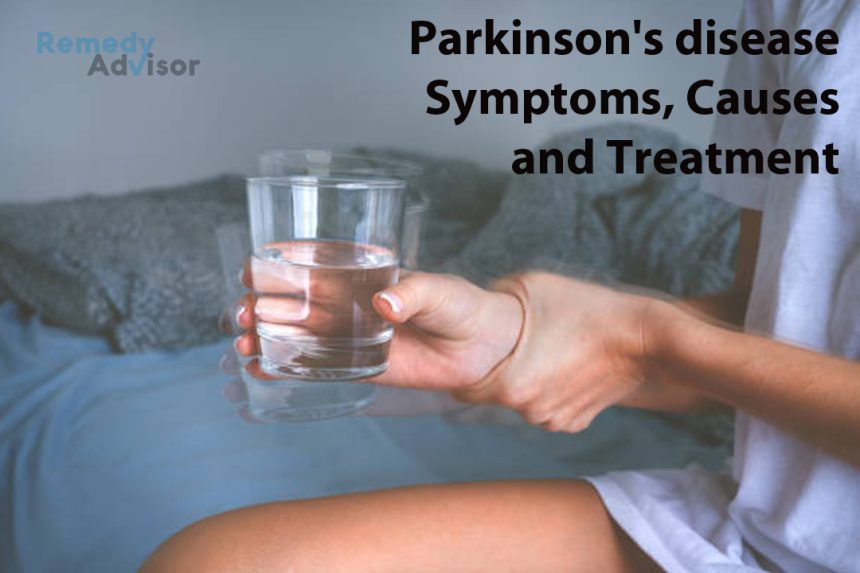More than one million Americans have been diagnosed with Parkinson’s disease the progressive, degenerative brain disorder. An equal number are thought to have the condition but don’t know it.
One percent of people over 60 have Parkinson’s, as do 2% of those over 70. But the condition can strike at any age.
There’s no cure for Parkinson’s. Drugs remain the mainstay of treatment, although surgery has become an option.
The symptoms
Most people are first alerted to the possibility that they have Parkinson’s by friends or family members who notice
• Tremor
It’s most apparent when the hand or foot is relaxed. Most Parkinson’s-related tremors are more pronounced on one side of the body.
• Slow movement (bradykinesia)
People with Parkinson’s swing their arms less when walking and take longer to wash dishes, take out the garbage, etc.
• Rigidity
Muscles become stiff and resistant to movement.
• Poor balance
Because they have trouble telling when they’re standing straight, people with Parkinson’s are likely to fall.
What causes Parkinson’s
Parkinson’s disease stems from damage to the substantia nigra. This region of the brain produces the neurotransmitter dopamine, which is vital to the function of a second brain area called the striatum which controls movement.
Just what destroys the substantia nigra is unclear. Heredity is apparently a factor. Recent studies suggest that pesticides may play a role as well.
The existence of clusters of Parkinson’s disease as on the island of Guam suggests that environmental factors may also be involved. But which agents might be involved is unknown.
Bottom line: There is no known way to prevent the disease.
The fastest treatment
The principal treatment is with a drug called levodopa (Sinemet).
L-dopa is quite effective at controlling symptoms of Parkinson’s. But there is a problem fluctuating levels of the drug within the brain. When levels are low, Parkinson’s symptoms return. High levels can cause tics, spasms and other side effects.
To maintain the right level, many Parkinson’s patients take time-release L-dopa.
The drug selegiline (Eldepryl) helps maintain proper dopamine levels by blocking the action of an enzyme that ordinarily breaks dopamine down.
With or without selegiline, L-dopa works well for just so long. After five to 10 years, most patients have increased side effects and poorer response.
Doctors now have another drug in their anti-Parkinson’s arsenal tolcapone (Tasmar), though its usefulness may be limited by liver toxicity.
Surgery
Surgery has been used to treat Parkinson’s since the 1930s. But techniques have vastly improved since then.
The most common form of surgery is pallidotomy. In this procedure, the surgeon inserts a tiny probe through the skull, and then applies electrical current to destroy a region of the brain called the globuspallidum.
Pallidotomy does not cure Parkinson’s disease. But properly performed, the surgery dramatically reduces tremor and improves the ability to move. It can be extremely helpful for patients who respond poorly to medication.
Because the globus pallidum lies deep within the brain, pallidotomy is risky. Even with a good surgeon, there is a 1% to 2% chance of hemorrhagic stroke.
The procedure can also cause temporary or even permanent confusion and disorientation. If you are thinking about pallidotomy, ask your neurologist for a referral to an expert neurosurgeon.
Fetal transplant
Some surgeons have begun taking tissue from the brains of 9- to 12-week-old aborted fetuses and implanting it into the brains of Parkinson’s patients.
This transplanted tissue starts producing its own dopamine, making up for the lack of dopamine in the patients’ brains.
As with pallidotomy, fetal transplantation carries a small but significant risk of stroke. But fetal transplants are often extremely effective especially in people under 60. (The older you are, the less likely the transplants will take hold and flourish.) Following surgery, some patients find that they no longer need medication.
Problem: Because fetal transplantation is considered experimental, the cost of the procedure about $50,000 isn’t covered by most health insurance.
And because of political objections to the use of fetal tissue, the operation is available only in certain states.
Good Samaritan Hospital in Los Angeles and the University of Colorado Health Sciences Center in Denver have the most experience with fetal transplants.







